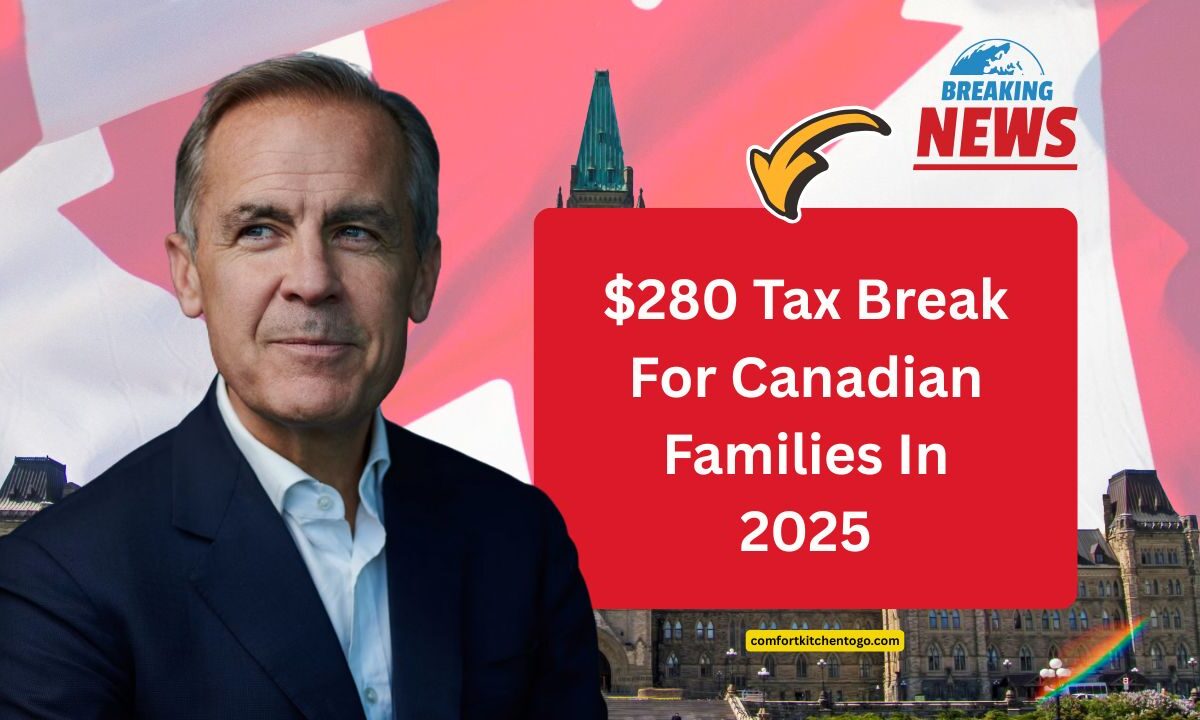The Liberal government of Canada has proposed a $280 tax break for families starting in July 2025, targeting relief for the middle class amid persistent inflation and rising living costs.
This reduction is expected to ease financial pressure on households, particularly those with modest incomes.
Here’s a detailed guide to understand who qualifies, how much you could save, and when the benefits will take effect.
What Is the $280 Tax Break About?
The proposed tax cut focuses on reducing the lowest federal income tax rate from 15% to 14.5% on the first $57,375 of taxable income starting July 1, 2025. The plan goes a step further, aiming to cut this rate to 14% by 2026.
The aim is to:
- Provide relief to middle and lower-income Canadians.
- Boost household disposable income.
- Help families cope with increasing expenses.
Who Will Benefit from This Tax Break?
This tax cut primarily benefits low and middle-income earners, especially those earning $57,375 or less.
It also benefits dual-income families, seniors, single parents, and immigrant workers across various sectors.
Groups Most Likely to Benefit:
- Retail and transport workers
- Healthcare and hospitality workers
- Customer support professionals
- Small business employees
- Senior citizens on fixed incomes
How Much Could You Save?
Here’s a breakdown of the estimated savings for different Canadian households:
| Category | Annual Savings (2025) |
|---|---|
| Average family | $280 |
| Dual-income family | Up to $840 |
| Single-income individual | Up to $420 |
| Single parents | Up to $140 |
| Low-income seniors | Up to $50 |
These figures reflect annual savings starting from the mid-year implementation. The real impact will be more noticeable in 2026, when the tax rate drops further.
How Will You Receive This Benefit?
The Canada Revenue Agency (CRA) will begin applying this tax cut from July 1, 2025.
Here’s how it will work:
- July–December 2025: Less tax will be deducted from your paycheck.
- Early 2026: If under-deductions aren’t noticeable, you’ll receive your savings as part of your 2025 tax refund.
This ensures increased in-hand income or a larger tax refund, depending on your employer’s payroll system.
What Does This Mean for Indian-Origin Families in Canada?
Indian immigrants in Canada often work in service sectors where the average income is below $60,000. For these families:
- Every dollar saved matters toward paying rent, grocery bills, or children’s education.
- A household where both spouses earn ~$50,000 could save up to $840 annually—an impactful amount for budgeting essentials.
Government and Opposition Views
While the tax cut is broadly welcomed, critics argue that:
- $280/year may not be enough considering rising rent, food, and utility costs.
- Opposition parties support the cut but label it as symbolic, demanding deeper reforms.
Still, the Conservative Party has pledged to expand tax relief up to 25% if elected, signaling more potential savings ahead.
Total Economic Impact
- Estimated Total Cost (5 years): $64 billion
- Net Government Cost (after credits): $28 billion
The government believes that injecting savings into households will help stimulate economic growth and encourage consumer spending.
Why This Tax Cut Is Timely
With inflation, interest rate hikes, and a tight housing market, Canadian households are stretched thin. A direct reduction in income tax provides not just relief but also flexibility to save or invest.
Finance Minister François-Philippe Champagne stated, “This measure is about letting hardworking Canadians keep more of what they earn and fueling long-term economic strength.”
The $280 tax break in 2025 is a small yet positive step toward easing financial burdens for millions of Canadian families.
While it may not solve all economic concerns, it offers timely relief—especially for middle and lower-income earners, dual-income households, and immigrants.
As Canada continues to navigate economic uncertainty, this measure provides a foundation for future relief and better household financial stability.
FAQs
When will the $280 tax cut come into effect?
The tax cut will begin on July 1, 2025, with taxpayers seeing benefits either through higher take-home pay or their 2025 tax refund.
Who qualifies for this tax break?
Anyone earning $57,375 or less in taxable income annually. Dual-income families, single parents, and seniors also stand to benefit.
Will this impact future government services or budgets?
The government estimates a $64 billion cost over five years, but they expect that increased consumer spending will offset some of this through economic growth.
